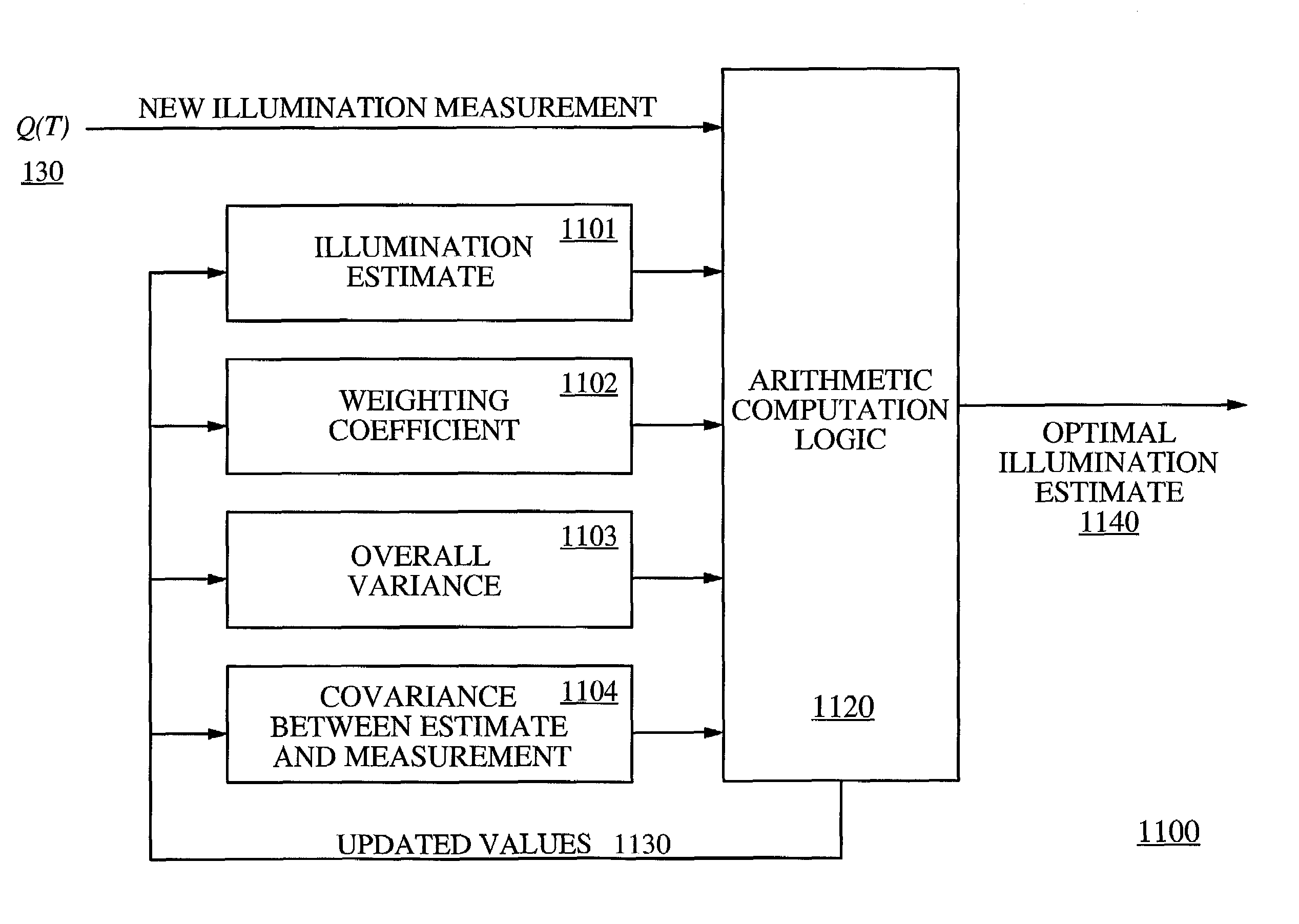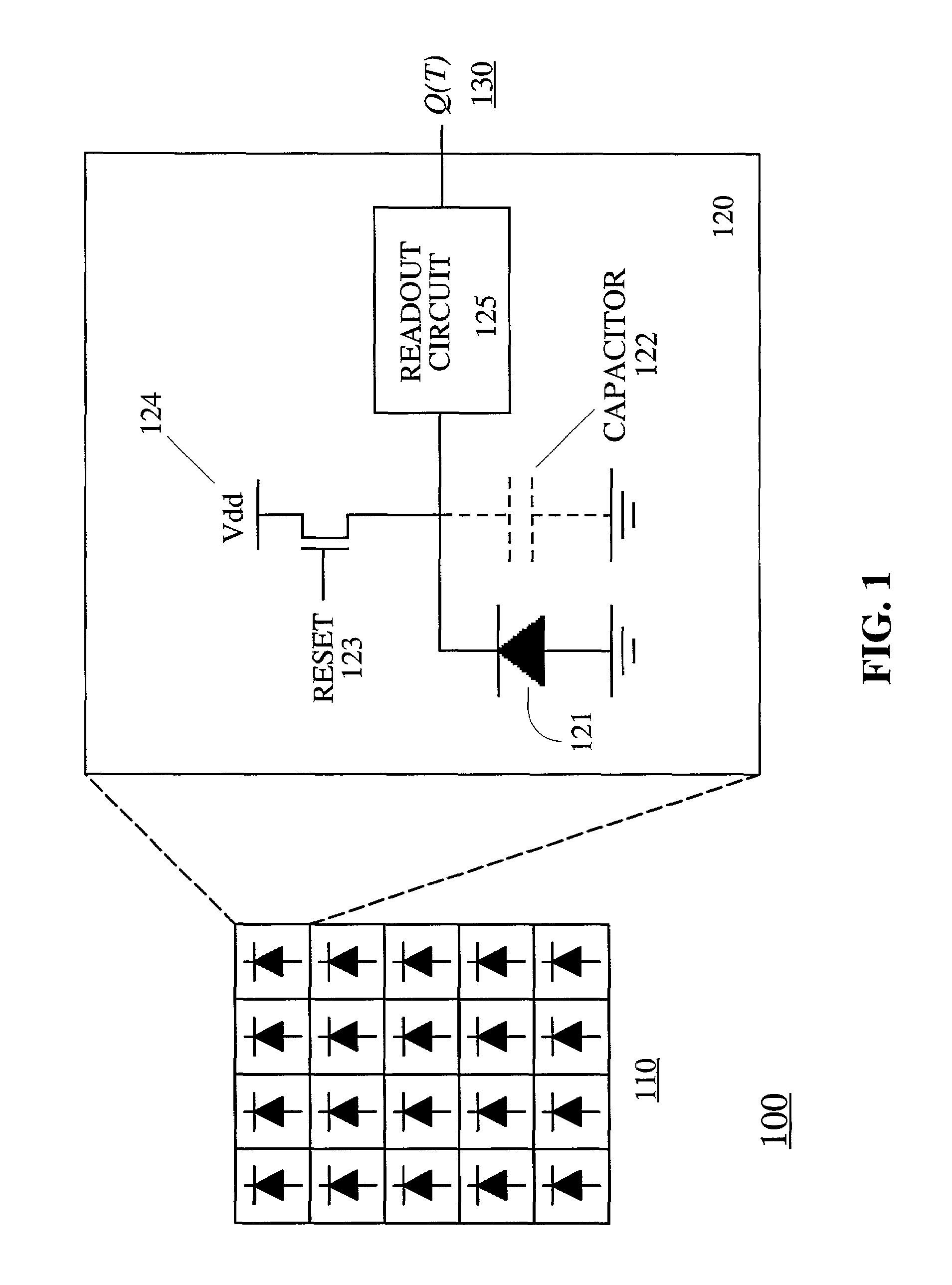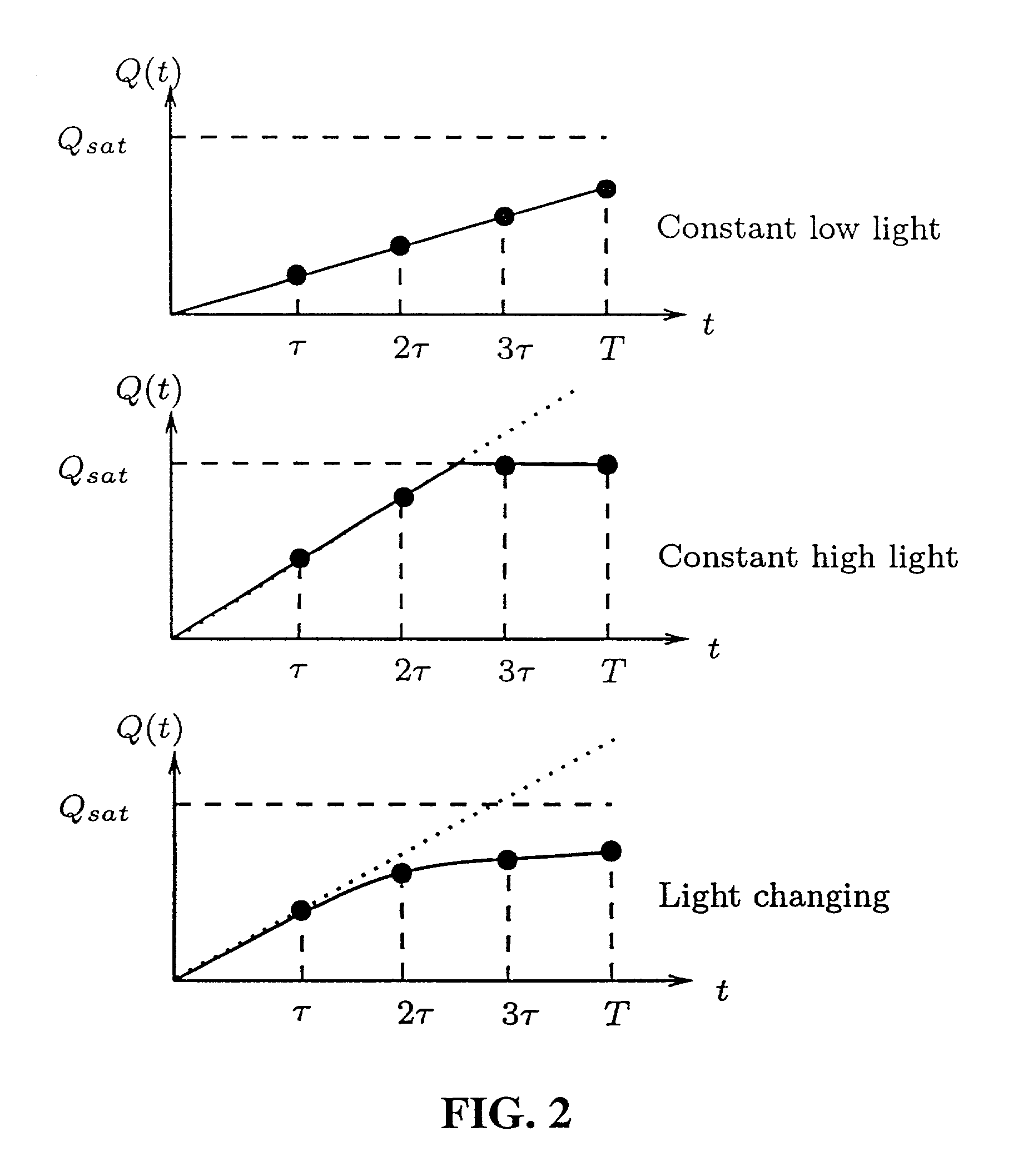Motion/saturation detection system and method for synthesizing high dynamic range motion blur free images from multiple captures
a detection system and motion blur technology, applied in the field of photocurrent estimation, can solve the problems of slow readout speed, inability of image sensors such as cameras, video recorders, security monitors, to capture details of both, and objectionable static or grain-like noise in captured images, so as to improve snr and dynamic range, improve snr, and enhance the dynamic range of a cmos image sensor system
- Summary
- Abstract
- Description
- Claims
- Application Information
AI Technical Summary
Benefits of technology
Problems solved by technology
Method used
Image
Examples
Embodiment Construction
[0037]CMOS image sensors are known to be capable of non-destructive readout at very high frame rate. This high speed image readout capability, which makes it possible to capture multiple images within a normal exposure time, and the potential of integrating memory and signal processing with the image sensor on the same chip enable the implementation of many new imaging applications.
[0038]Prior implementations have demonstrated the use of this capability to enhance the image sensor dynamic range. The idea is to capture several frames during a normal exposure time and combine them into one single dynamic range image. These prior implementations, however, do not reduce read noise and thus only enhance the image sensor's dynamic range at the high illumination end. For example, as described herein, it has been proposed to simply scale each pixel's last sample before saturation for the synthesis. However, because read noise is not reduced, this prior art method only increases dynamic rang...
PUM
 Login to View More
Login to View More Abstract
Description
Claims
Application Information
 Login to View More
Login to View More - R&D
- Intellectual Property
- Life Sciences
- Materials
- Tech Scout
- Unparalleled Data Quality
- Higher Quality Content
- 60% Fewer Hallucinations
Browse by: Latest US Patents, China's latest patents, Technical Efficacy Thesaurus, Application Domain, Technology Topic, Popular Technical Reports.
© 2025 PatSnap. All rights reserved.Legal|Privacy policy|Modern Slavery Act Transparency Statement|Sitemap|About US| Contact US: help@patsnap.com



